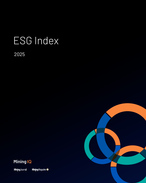This article is 13 years old. Images might not display.
Rio economics and markets head Vivek Tulpule presented in Melbourne and Sydney on Friday and said that recent economic data had been more positive, pointing to manufacturing earnings, port output and rail cargo turnover growth, property sector stabilisation and housing sale increases and increasing credit support from other financing channels.
The company is forecasting gross domestic product to average 8-9% to 2015, 7-8% from 2015 to 2020 and 5-6% thereafter as urbanisation slows.
Rio expects Chinese steel production to reach 1 billion tonnes per annum by 2030, with many Chinese provinces only just beginning to enter the steel intensity curve.
The company expects up to 2 billion additional people to urbanise by 2030.
The compound annual growth rate for steel production from 2000-2010 was 18%, growing from just over 100 million tonnes per annum at the turn of the century to more than 600Mt in 2010.
While construction accounts for more than half of steel consumption currently, Rio expects it to change by 2030, with domestic industrial use to take over as the main usage.
At the end of the current decade, steel production was expected to reach over 900Mtpa and record a CAGR of 1% until 2030, after which it will decline to around 800Mtpa by 2050.
Meanwhile, global steel consumption was expected to rise by 2% per annum until 2030, with China to dominate until the mid-2020s.
Rio expects India and other Southeast Asian countries to offset falling Chinese consumption after that point.
The somewhat positive outlook came after Rio last month cut its growth outlook for China to 7.8% for this year and 8.2% next year.
As a result of a more cautious outlook for China, the company said it didn’t expect to approve any new projects in the near future.
The first sign of the company slowing its iron ore expansion in the Pilbara came on Friday when it announced a “non-essential” accommodation village at Paraburdoo had been deferred indefinitely.
Iron ore prices slumped to below $US90 a tonne in August, sparking a raft of project suspensions and deferrals.
Prices have since recovered to just over $120/t.
ANZ said iron ore prices notched up their fifth consecutive weekly gain last week.
























